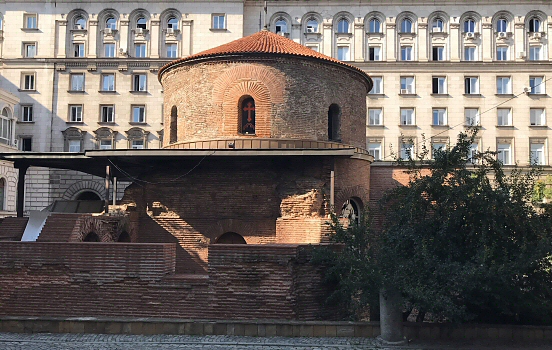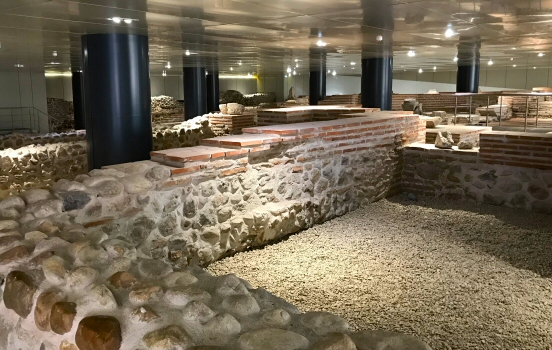There’s something about Bulgaria that doesn’t give a damn what you think. Tucked away in the southeastern folds of Europe, it’s the kind of place that’s been stomped on, fought over and forgotten more times than anyone can count. But it endures. Scrappy, proud, and wonderfully weird.
Sofia, the capital, is a paradox wrapped in crumbling Soviet concrete and speckled with golden domes. Street dogs nap beside Roman ruins. Orthodox chants echo from churches that look like they were carved out of a Byzantine postcard.
 The 4th century St. George is the oldest church in Europe.
The 4th century St. George is the oldest church in Europe.
The city has been a cultural crossroad since ancient times, and Constantine the Great even considered making it the capital instead of Constantinople. Even though Sofia was destroyed in 447 AD by the Huns and remained devastated for over a century, it managed to get back on its feet and got rebuilt by the Byzantine emperor.
I wander through the large Alexander Nevsky Cathedral and suddenly it’s like stepping into a medieval hallucination, where candles flicker in the dark, the scent of incense lingers thick as honey and icons staring me down like they know what I did last summer.
 Remains of the Roman city Serdica can be seen on several locations.
Remains of the Roman city Serdica can be seen on several locations.
And then, around the corner, some brutalist nightmare looms like a hangover from the Iron Curtain days. After the Byzantine rulers, the Soviets came with their tanks, five-year plans and cement monoliths.
As I walk around in the old city, I observe the scattered remains of legacies. Every regime tried to leave its mark, but Bulgaria absorbed it all like a scarred but stubborn sponge, and spit it out at random.

Comments
No comments yet.
Leave a reply